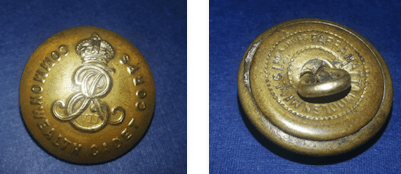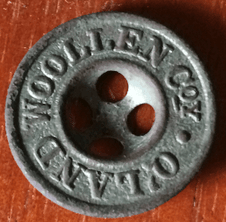Table of Contents
Amco
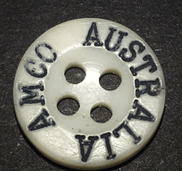
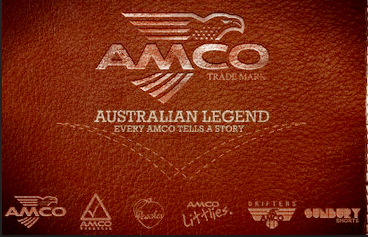
The Amco Clothing Company had its origins in Sydney in 1948 manufacturing butchers aprons and painters drop sheets! It became a well known brand of jeans and other casual wear before going into liquidation in 1980. However, it had morphed into the Amco International Clothing Company by the next year. The brand is now owned by Jagger Australia Pty. Ltd. and manufactures in China.
Australian Knitting Mills Limited, Richmond
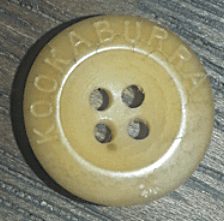
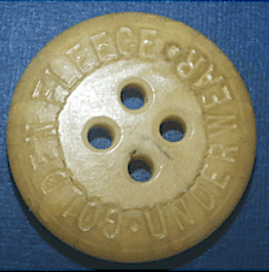
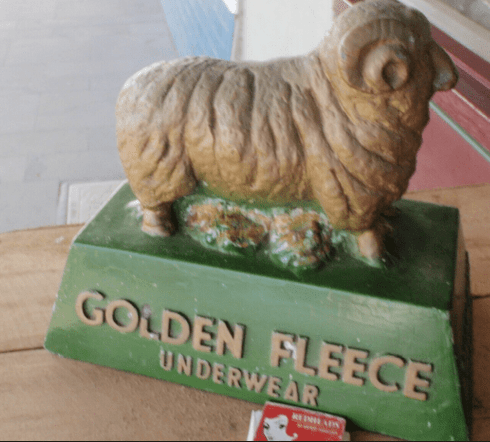
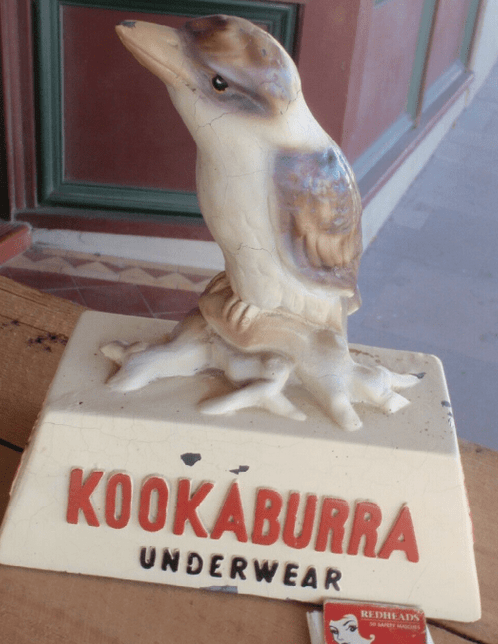
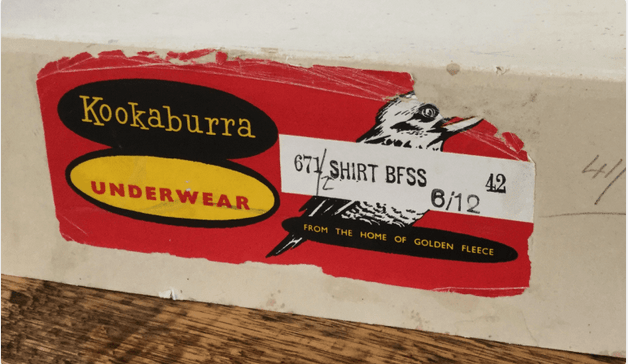
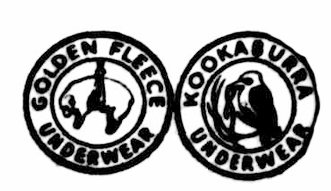
In 1899 Thomas Murry &Co established a small knitting mill in Richmond. The mill expanded several times to keep up with increased production. In 1908 they began to produce Golden Fleece brand woollen underwear. These were made from 100% Merino Fleece. In 1910 the company changed its name to the Australian Knitting Mills. The Kookaburra brand (underwear made of wool/cotton mix) was established by 1917. If you glance out the window of your train at Richmond station you can see the old mill building.
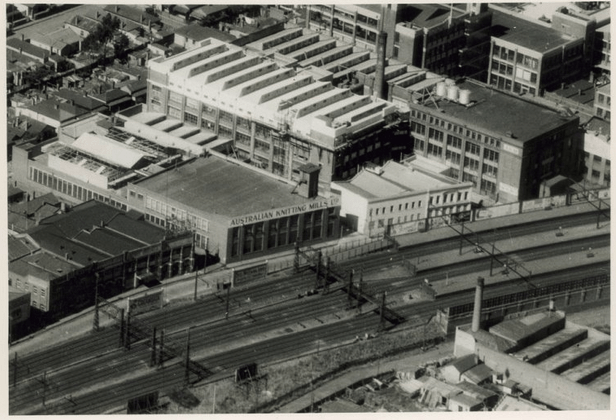
State Library Victoria https://viewer.slv.vic.gov.au/?entity=IE1866274&mode=browse
Barcol Knitting Mill, Prahran
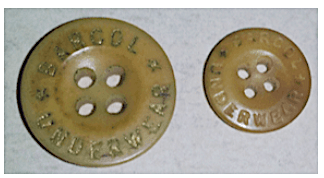
Barcol operated in Chapel Street, Prahran from about 1924 until 1931. It was listed on the stock exchange in 1926 as Barcol Manufacturing Company Pty. Ltd.
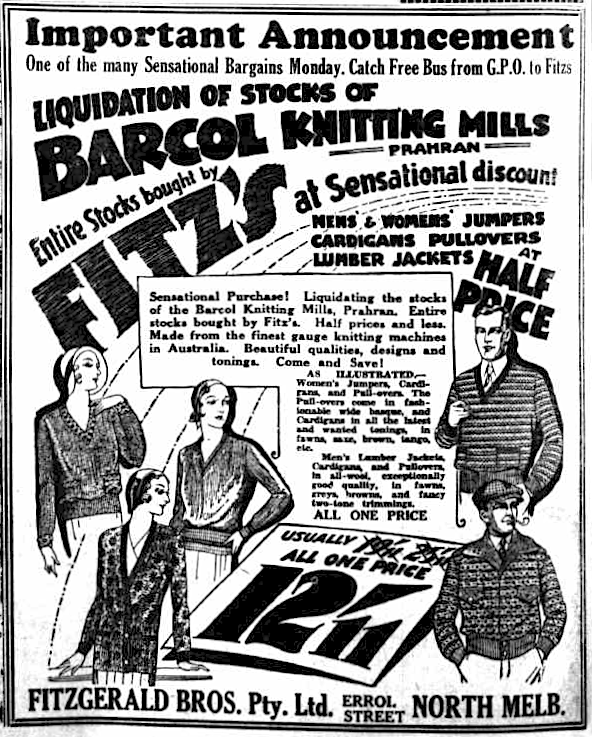
The Herald (Melbourne) 25th July 1931 page 10.
Bender Knitting Mills P/L
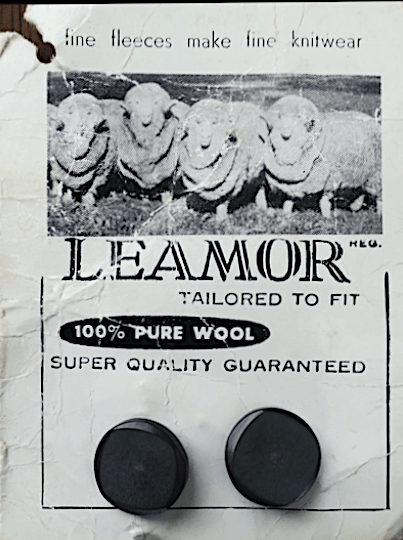
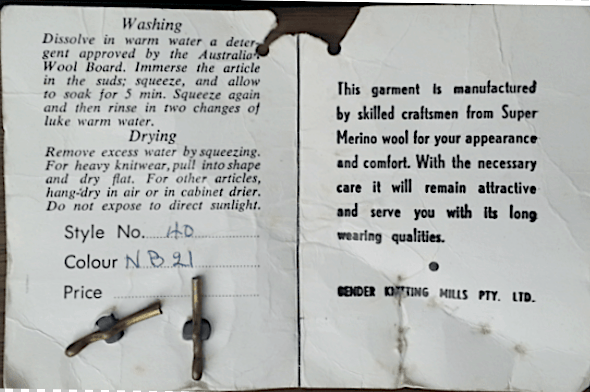
Bender Knitting Mills existed from at least 1941 in Leicester Street, Carlton, Melbourne, and were listed as a propriety limited company from around 1953.
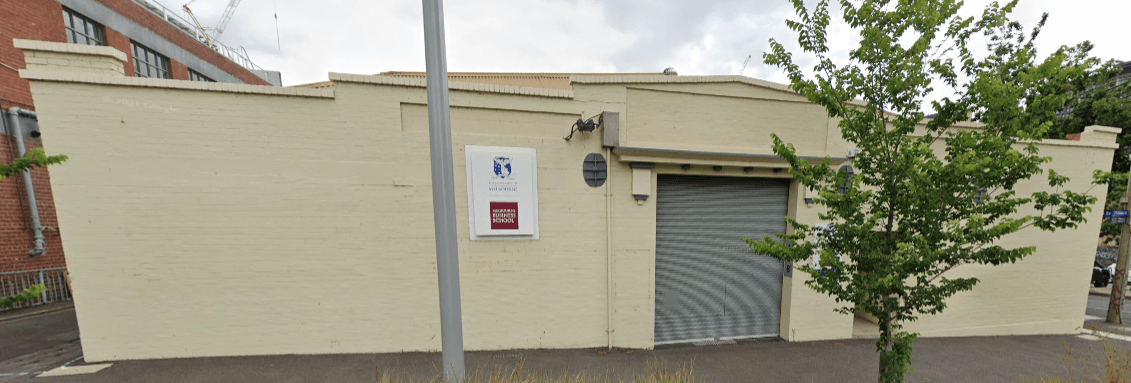
Images from Google maps. 176 Leicester St. Carlton
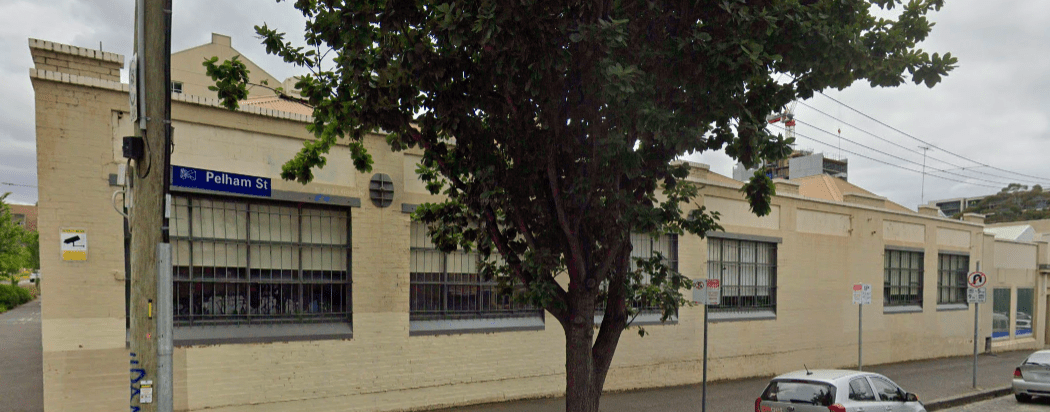
Around the corner in Pelham St.
They made quality men’s knitwear, with the Leamor brand dating from around 1941 onwards. The firm may have closed in 2001.
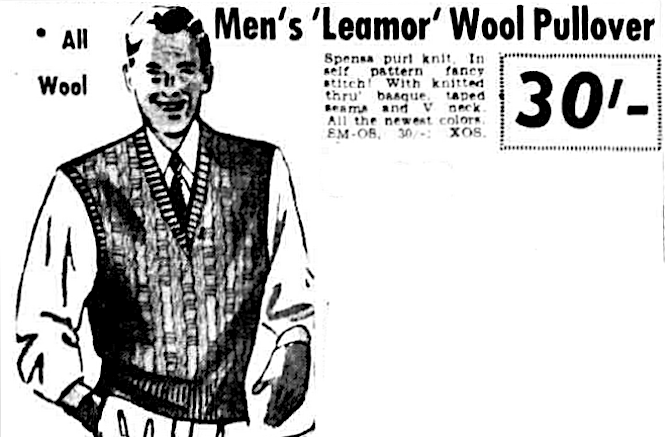
The Herald (Melbourne), 9th January 1954 page 2.
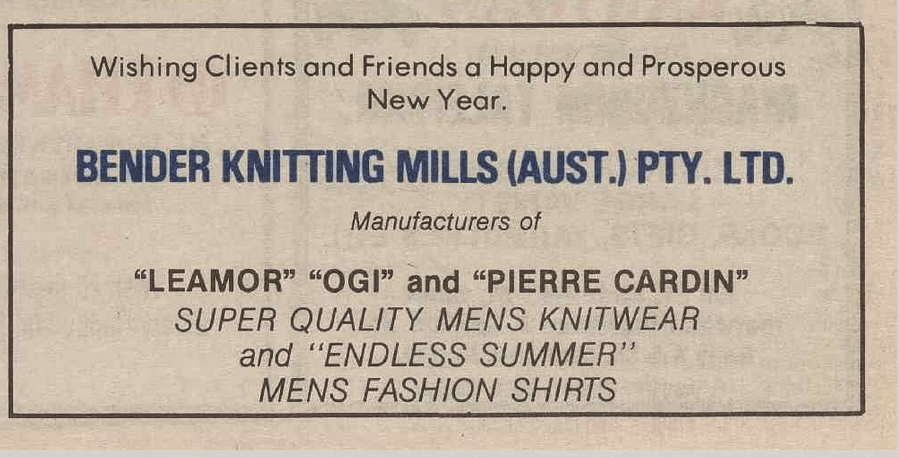
The Australian Jewish News (Melbourne), 18th September 1987 page 132.
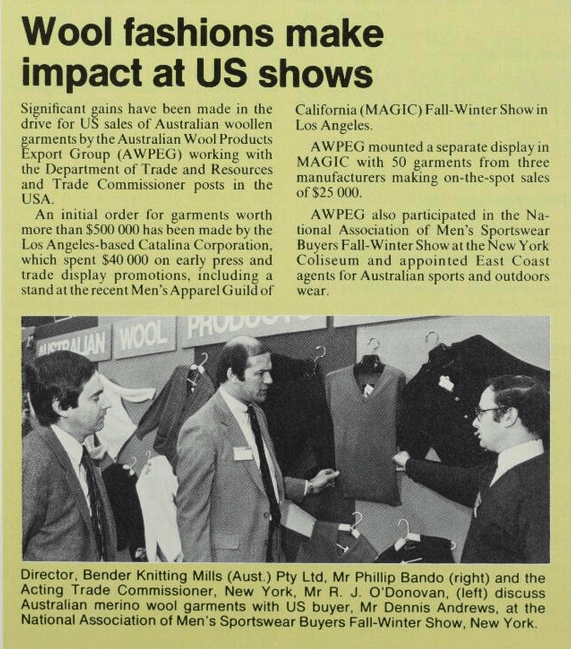
Overseas Trading magazine, 5th June 1981 page 353.
Billabong
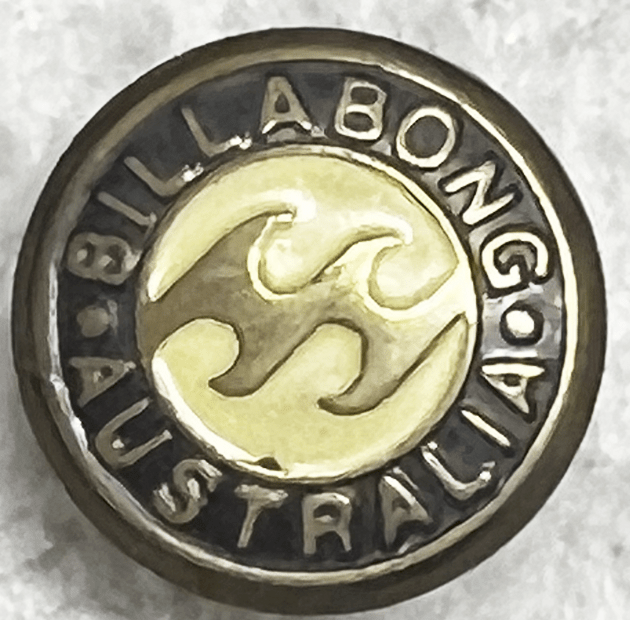
Billabong, a surfwear and accessories retailer, was established on the Goldcoast in 1973 when Gordon Merchant started making board shorts from home. The company began to export in the late 1990s and to acquire other products and brands in the following decade.
Over-expansion had lead to unsustainable debt. Profits crashed. Stores were closed and brands sold off. Takeover bids were offered and contested. In 2018 it was acquired by Boardrider Inc., owners of rival Quicksilver.
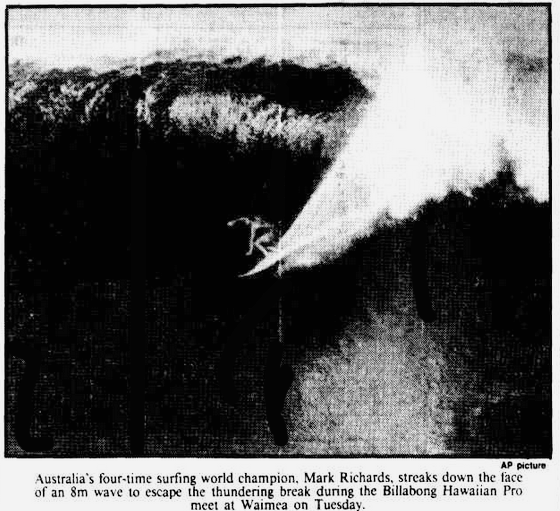
The Canberra Times, 12th December 1986 page 22. Billabong sponsors surfing contests.
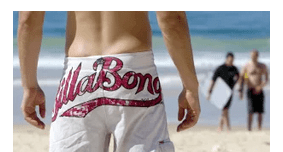
Blue Illusion
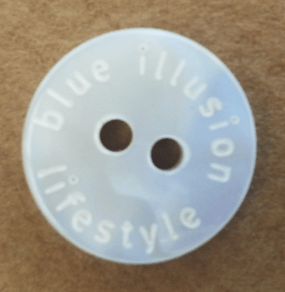
This is a ladies’ fashion brand founded by Donna and Danny Guest in Melbourne in 1999. It had 107 stores across Australia and New Zealand in 2019.
Bond’s Industries Limited, Sydney
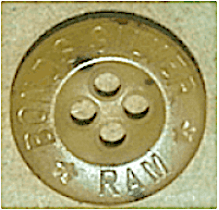
Around 1907 an American by the name of George Alan Bond came to Australia. From 1915 he started patenting and trademarking articles of clothing. The firm of George A. Bond and Company was the start of what became Bonds Industries Limited. From 1932 to 1938 they advertised ‘Silver Ram’ pure woollen underwear.
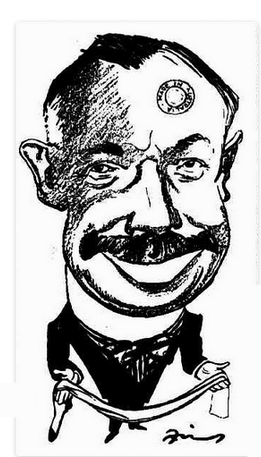
Smith’s Weekly 12th January 1924 page 2. A caricature of George Bond. (Notice the ‘Made in Australia’ stamp on his forehead.)
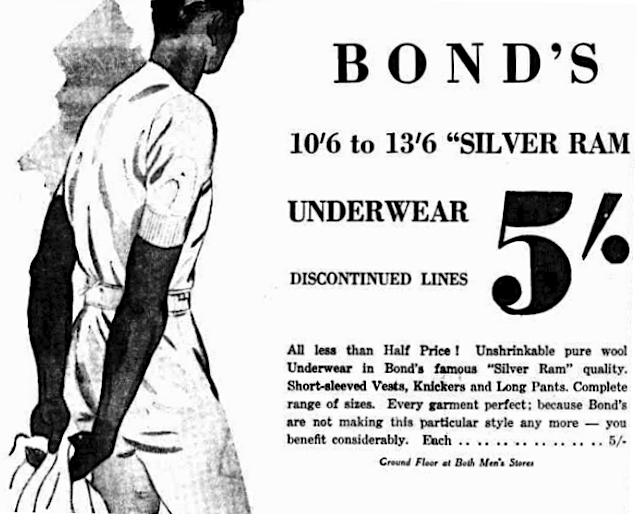
The Sun(Sydney) 23rd June 1938 page 42.
Butterick
This brand of sewing/fashion patterns was founded in 1870. From 2001 it was owned by the McCall Pattern Company, but is now (along with Simplicity, McCall’s, Vogue) owned by UK based ‘Design Group’. From 1964 Butterick licensed the name and trademark of Vogue, and bought its pattern making division. Some of the Butterick cards below probably date pre 1964. However, some clearly don’t and yet still only have the name Butterick, instead of both Butterick and Vogue.
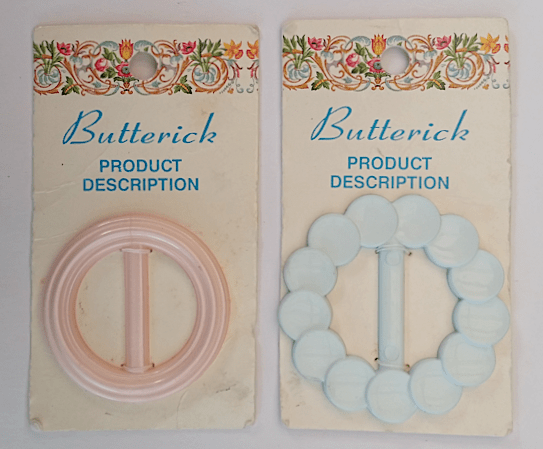
Around 1978 the script for ‘Butterick’ changed to all upper case lettering.

From a 1977 advert.

From a 1978 advert.
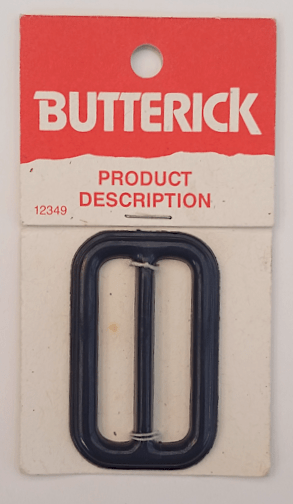
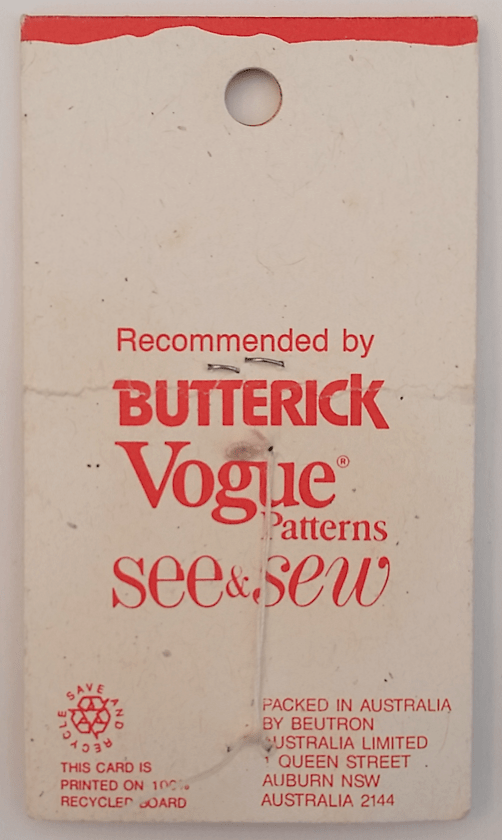
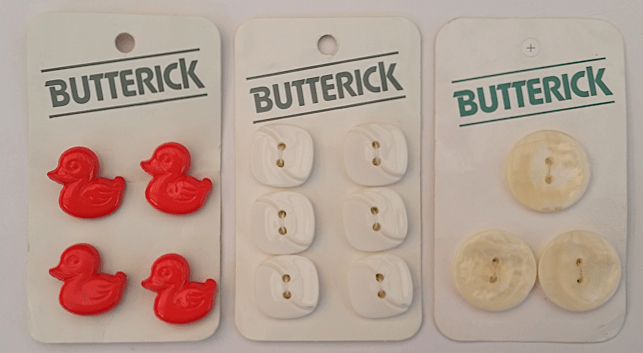
Produced by Beutron. Marked ‘Butterick Patterns’ on the back.
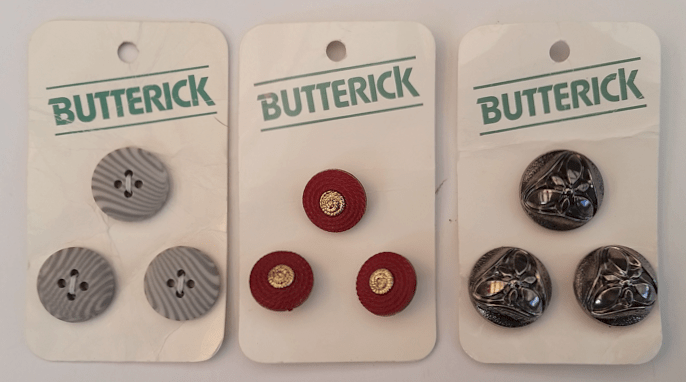
Produced by Beutron. Marked with both ‘Butterick Patterns’ and ‘Vogue Patterns’.
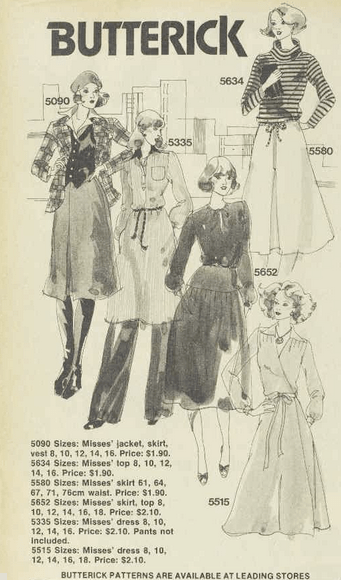
The Australian Women’s Weekly, 24th May 1978 page 128.
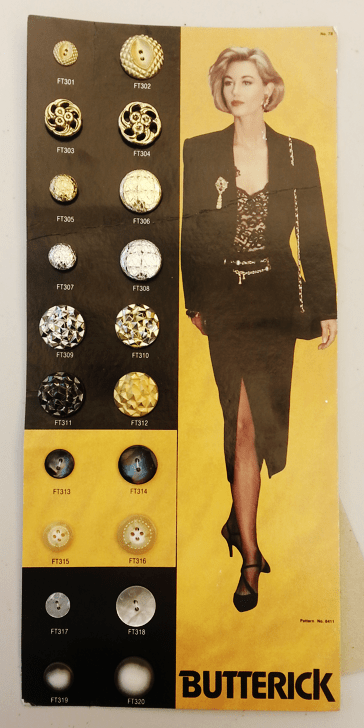
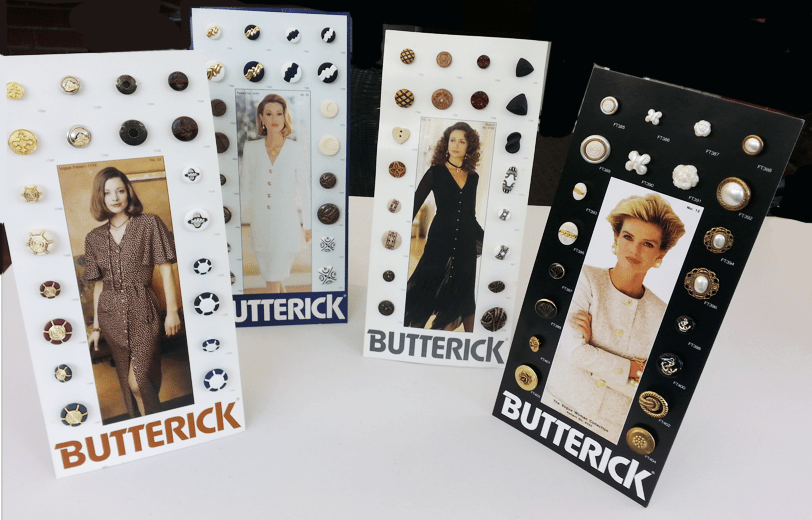
The white cards date from 1994; the black probably 1993.
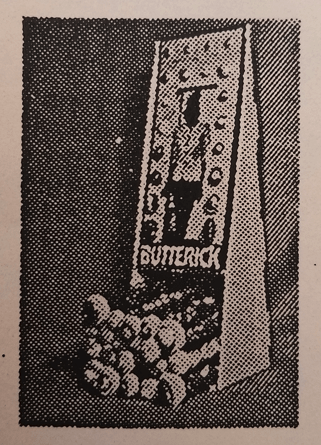
From a Butterick “Tubed Buttons” order form dates during 1994, and shows “an attractive counter merchandiser ready to hold stock and the display card”
Can’t-Tear-‘Em
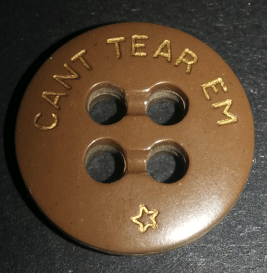
Over many years several tailors and manufacturers have used this slogan and/or brand name. The original “Can’t Tear ‘Em” tailors were Messers. Turnball and W. Shortal of Albury.
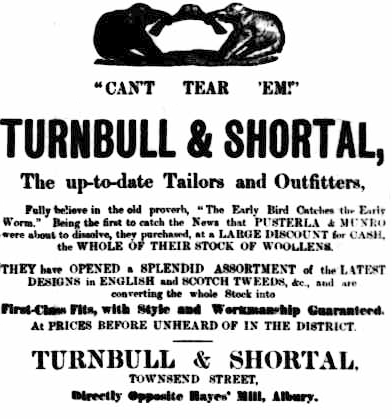
Wodonga and Towong Sentinel, 7th September 1894. This is the earliest advert in Trove with the ‘Can’t tear em’ slogan. They had the advert placed sideways on the page to stand out! Note the two elephants.
In Townsville, Carse’s were selling “Miners Moles, Can’t Tear ‘Em” in 1903-4. From 1917 onwards ‘Can’t Tear ‘Em’ work trousers were being sold in Queensland. These may have been made by Josephson & Sons in Brisbane. Certainly they were using this slogan from around 1931. (Messrs. Sargood & Gardiner of Sydney took them to court for copyright infringement in 1935, claiming their branding using a bulldog was being copied, but lost the case, as their bulldog was associated with a ‘Top Dog’ trademark slogan, and was considered substantially different.) The ‘Can’t-Tear-‘Em’ work clothes were being sold Australia wide from around 1949.
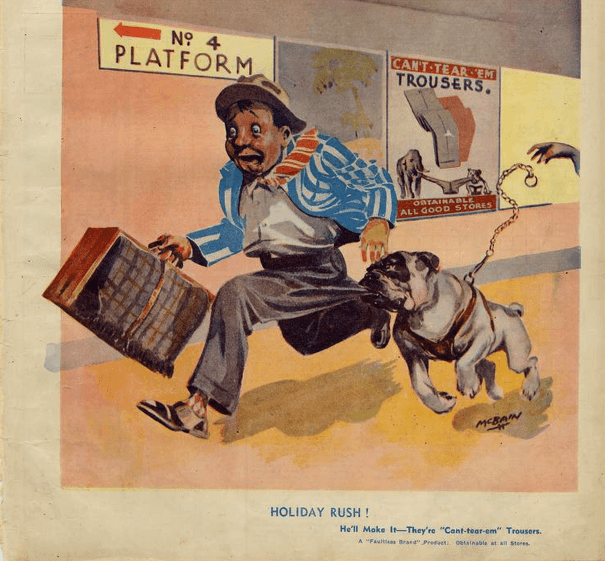
Front cover from The Queenslander, 19th December 1935. This was to advertise clothing made by Josephson & Sons of Roma Street, Brisbane. Their clothing’s main branding was ‘Faultless Brand’ but some had branding with a picture of a bulldog and elephant pulling on trouser legs (see the poster on the wall behind the running man above).
The company continues today as CTE P/L who “manufacture and design of combat uniform and specialised protective clothing, industrial workwear, high visibility and flame retardant, wet weather, structural and bushfire assemblies.”
Casben Productions Ltd., Sydney
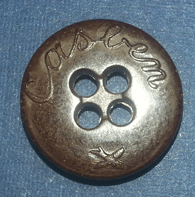
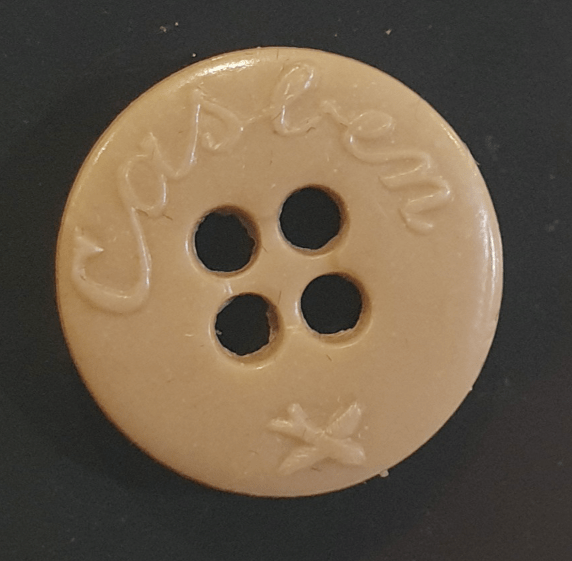
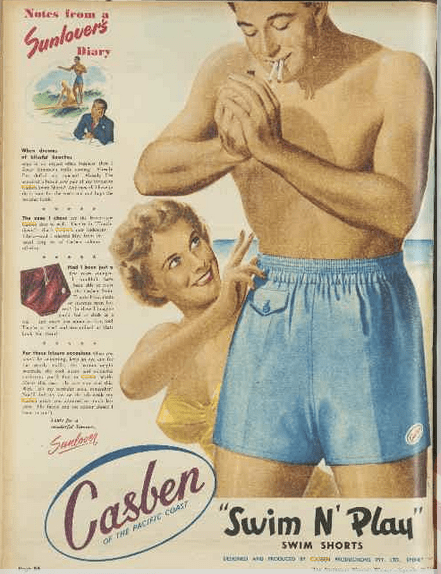
Australian Women’s Weekly, 26th September 1951 page 64. “Pass me a ciggie, love.”
Commonwealth Clothing Factory Miles Street, Southbank, Melbourne
According to the Victorian Heritage data base:
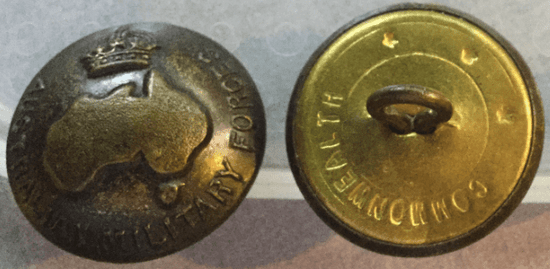
Presumably these are buttons for AIF uniforms made at the factory.
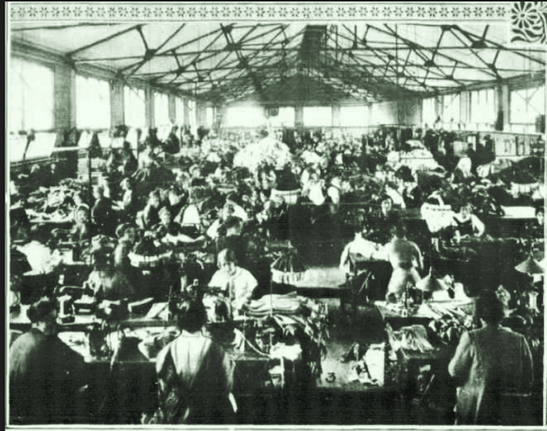
‘The Australasian’, 4th September 1915 page 25. Work at the Commonwealth Clothing Factory for war requirements.
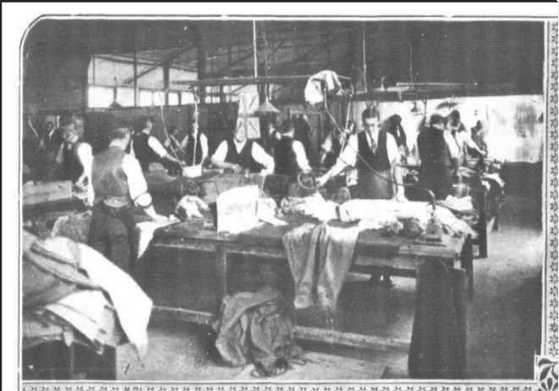
‘The Australasian’, 4th September 1915 page 25. Pressing uniforms.
The pictures below, from the State Library of Victoria, date c.1940.
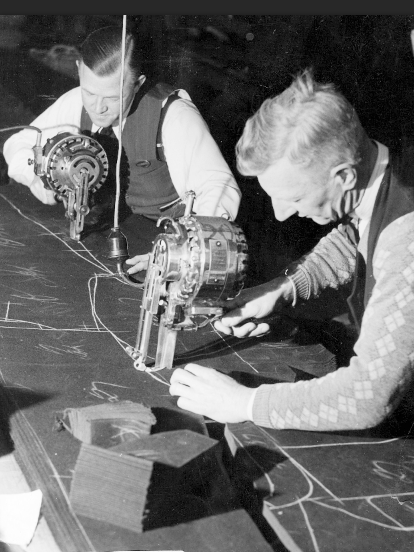
Cutting cloth.
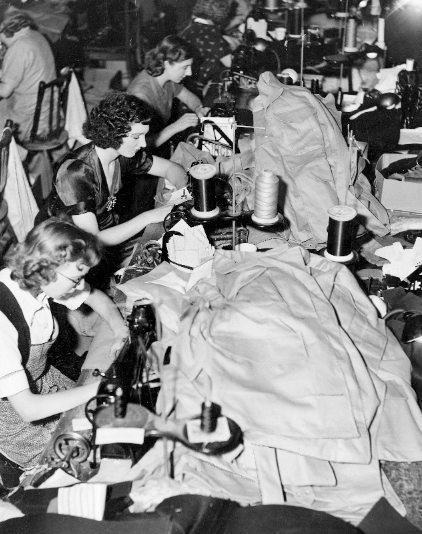
Making uniforms.
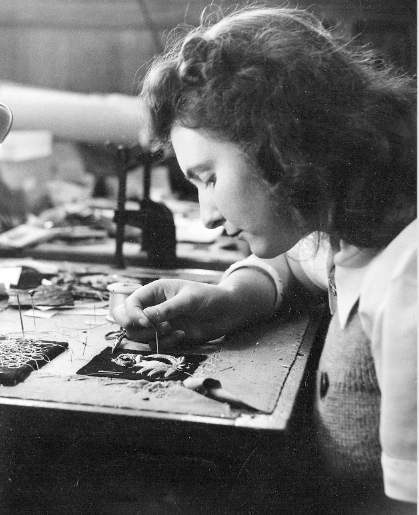
Making gold braid badges.
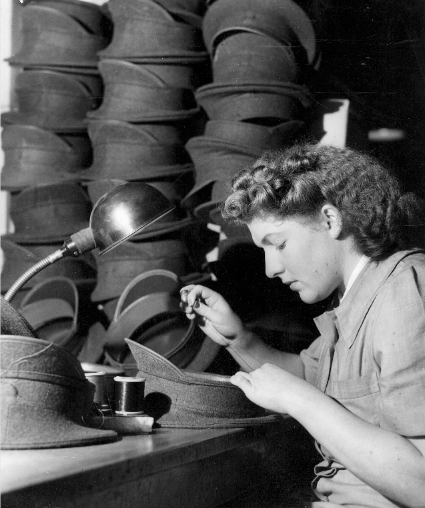
# 1718837 Sewing up hats.
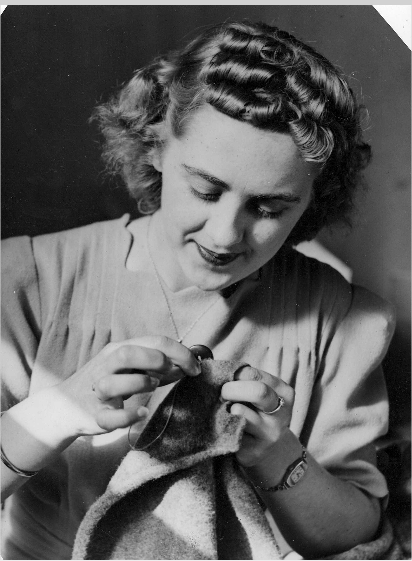
#171 8472 Sewing Buttons
Cumpston’s, Perth
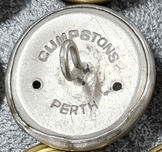
Backmark seen on back of WA Gaol Department uniform button. This may date from 1982-87.
As early as 1895, Richard Stanley Cumpston (1869-1940) was working as an engraver in Melbourne. By 1895 he had moved to Perth. In 1910 the first advertisement for Cumpston’s Engraving Works appeared. ( (Also from 1902 known he ran the the City Electric Engraving Works). They engraved brassplates, stamps, made stencils and badges, etc. The firm was finally delisted in 1992. They had held many government contracts.
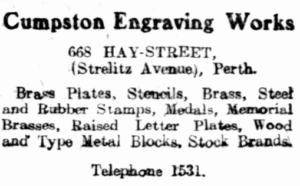
Sunday Times (Perth), 1st May 1910 page 2.
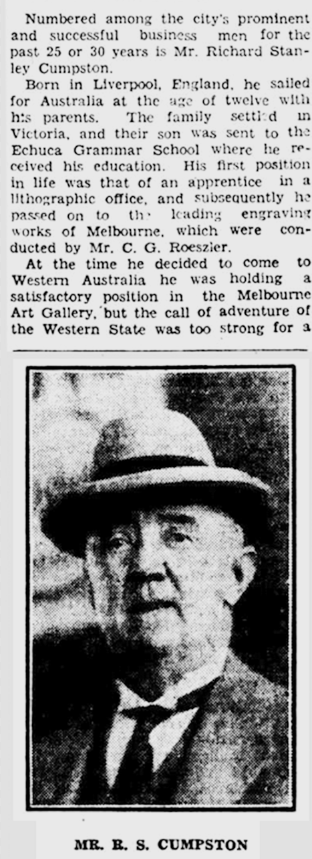
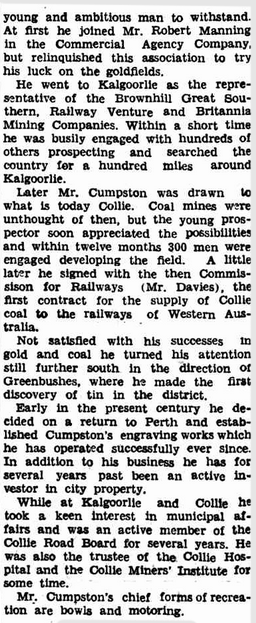
The Daily News (Perth), 27th October 1930 page 4.
Dunlop Weatherproofs Australia Pty. Ltd., Wagga Wagga
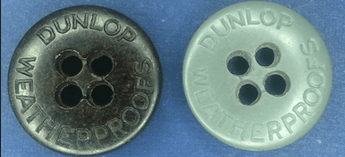
In 1944 the Dunlop Rubber Co. Ltd took over a munitions factory in Wagga Wagga and registered a garment division of the company to make uniforms for the military. After the war they continued as the largest single employer in the region, only closing in 1977.

Daily Advertiser (Wagga Wagga, NSW), 7th March 1946 page 6.
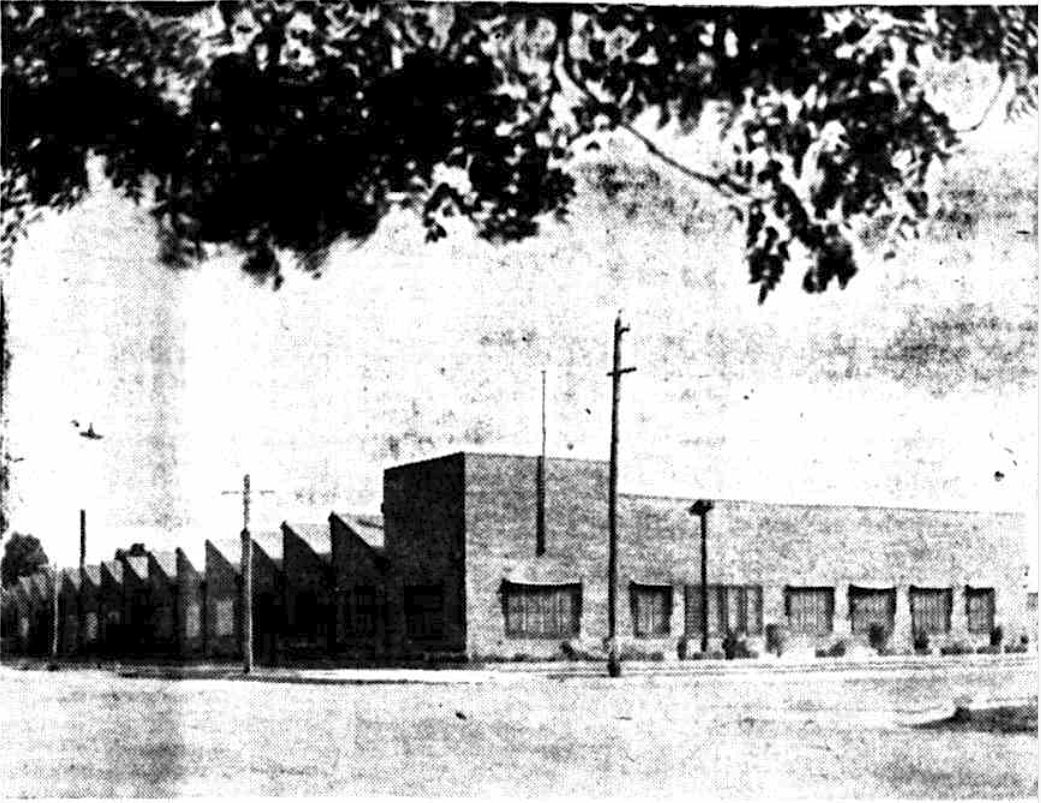
“Exterior view of the clothing factory in Forsyth-street.”
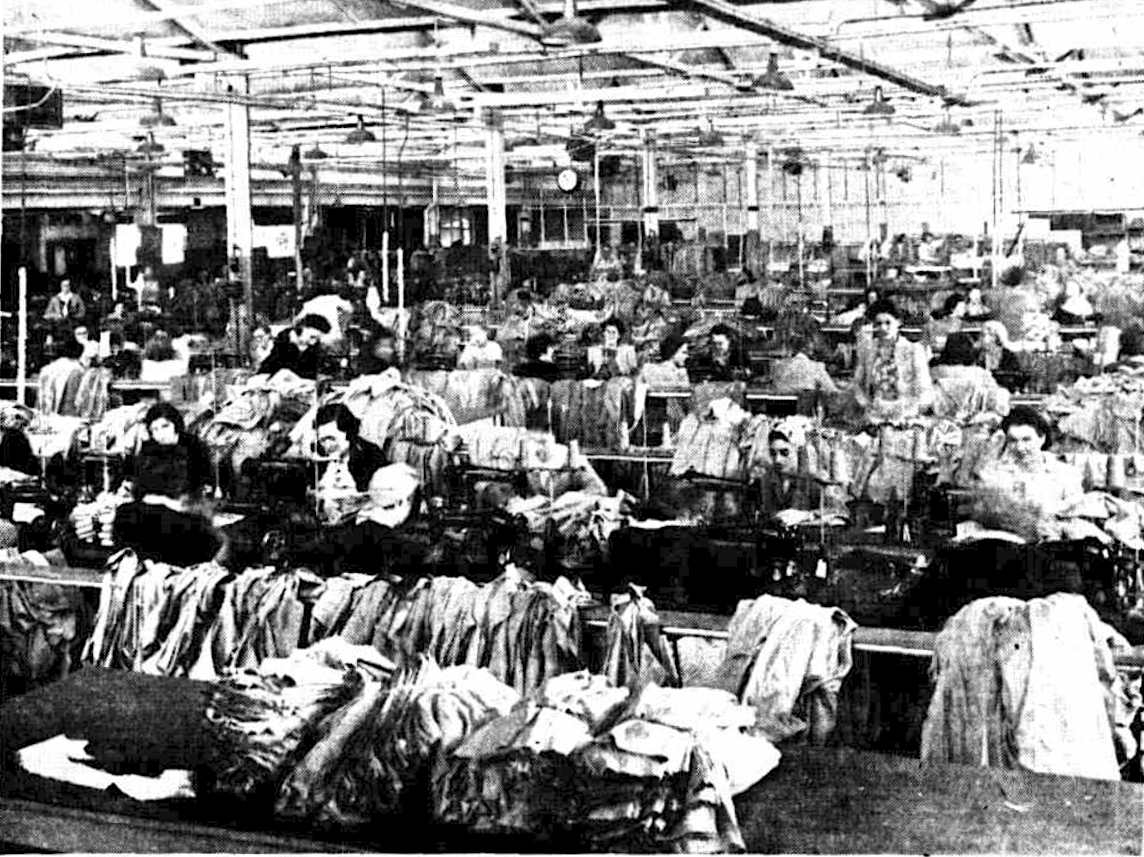
“A busy scene in the huge workroom where many types of weatherproof garments are made.”
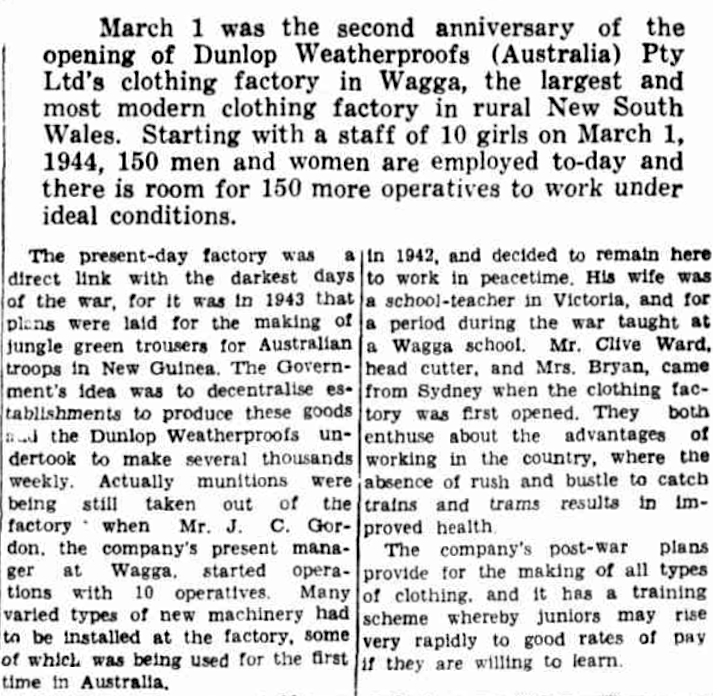
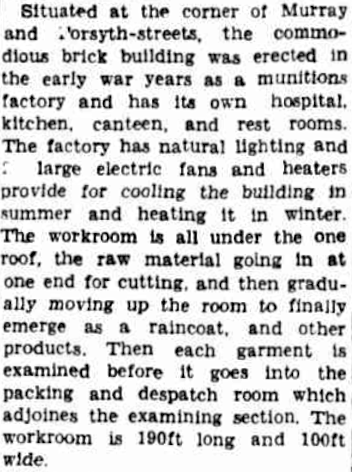
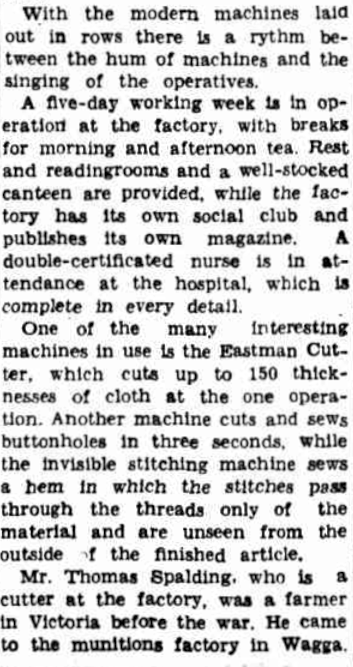
Fletcher Jones, Warrnambool
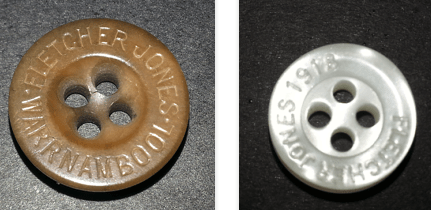
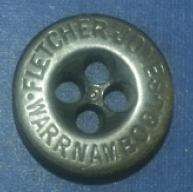
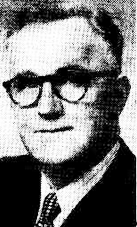
David Fletcher Jones, clothing manufacturer and retailer, was born in Bendigo in 1895. He purchased a tailoring and menswear business in Warrnambool in 1924. He moved his business into making quality fitted trousers, including for the army. In 1948 a new factory was constructed on the site of a former rubbish dump, with extensive gardens that became, and remain, a tourist attraction. In the late 1940s he changed the business into a co-operative with his employees, renaming it Fletcher Jones and Staff Pty. Ltd. In the mid 1950s they extended into women’s clothes. Mr Jones died in 1977. The business was sold in 1998. Many of the stores, including the Warrnambool factory, were sold 2011.
Goode, Durrant and Murray Ltd.
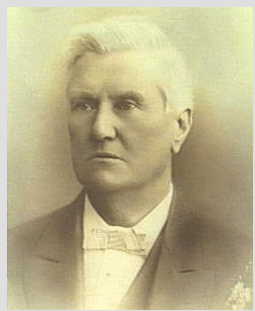
Charles Henry Goode c.1900, founder.
State Library of SA https://collections.slsa.sa.gov.au/resource/B+11258
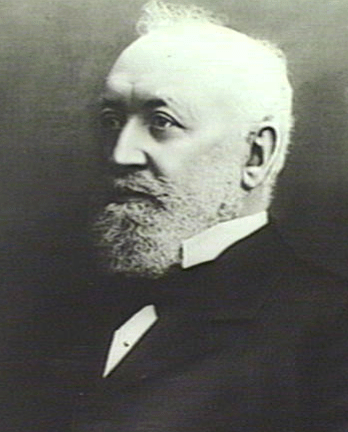
David Murray c.1900, founder.
State Library of SA State Library of SA https://collections.slsa.sa.gov.au/resource/B+53209
In 1882 a firm by the name of ‘Goode, Durrant, Tite and Co’ was started in Adelaide as a softgoods importer, becoming ‘Goode, Durrant & Co’ in 1894 when William Henry Tite retired. In 1887 an office was opened in Perth. From around 1899 a factory for manufacturing menswear under the ‘Federal Clothing’ brand started, extending to ladies wear and footwear. To improve profitability, the company merged in 1934 with the South Australian, West Australian and Broken Hill branches of the firm of D. & W. Murray Ltd to form Goode, Durrant and Murray Ltd. The overlapping letters G, D and M of the company’s name can be seen near the top of the card. (David Murray and his brother William ran a retail, then later wholesale drapery store ‘D. & W. Murray’ in Kind William Street, Adelaide from 1852, and later expanded around Australia.)
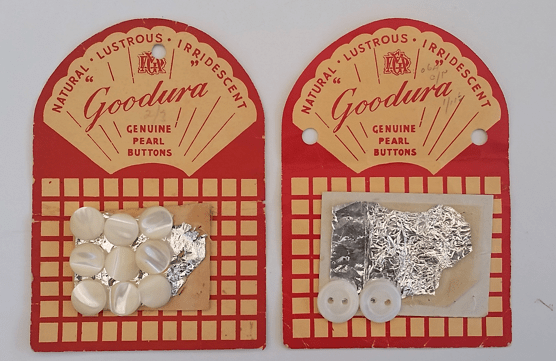
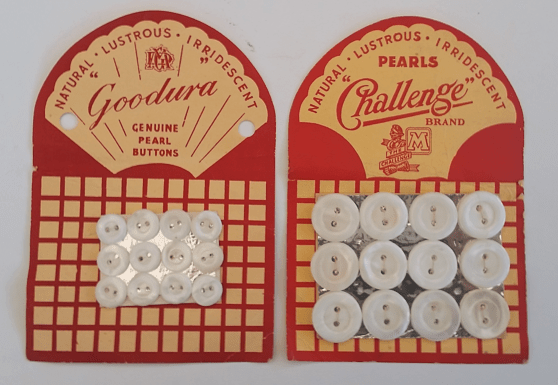
Challege was their brand of clothing.The trademark ‘Goodura’ ( a contraction from Goode and Durrant, but also referring to ‘good and durable’) was registered in 1921. It initially was used for the company’s carpets, floor cloths and oilcloths, but would be used for other materials, hats, coats, trousers, shirts, suits, boots and pyjamas.
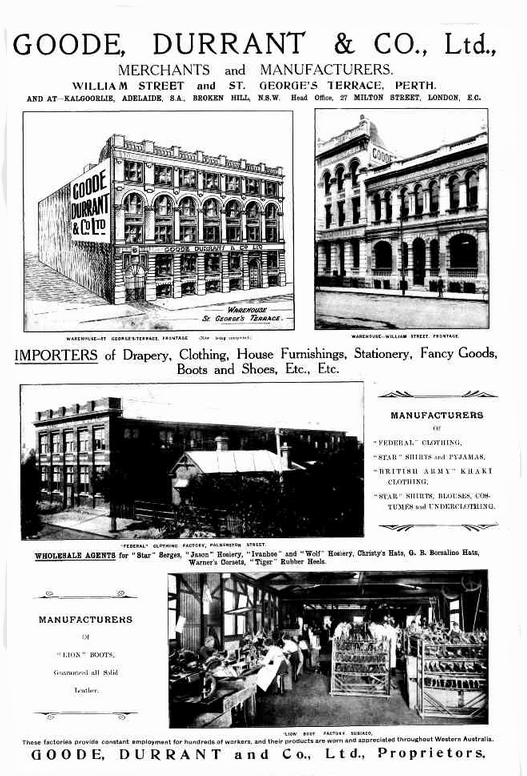
Western Mail, 11th December 1914 page 28.
Goondiwindi Cotton
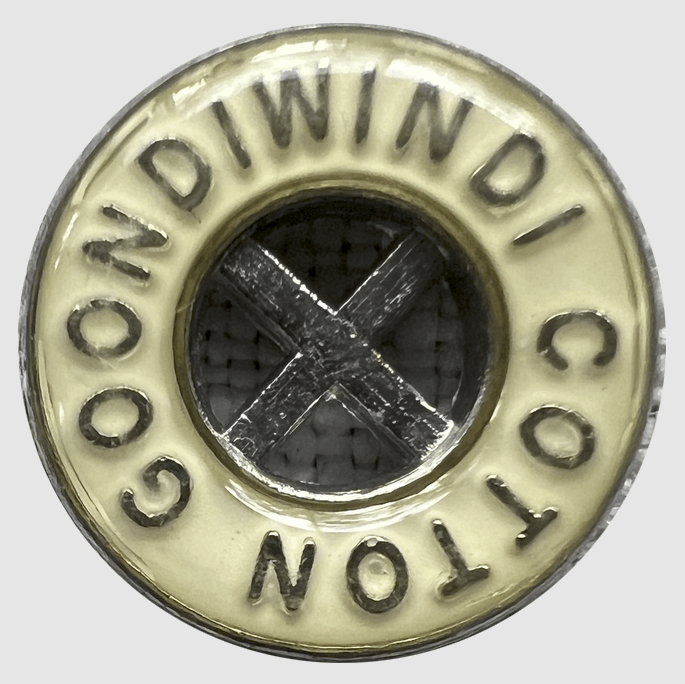
This is an Australian based, family clothing business specialising in the use of cotton, linen and merino wool for their products.They started in 1989. See https://goondiwindicotton.com.au/pages/our-story
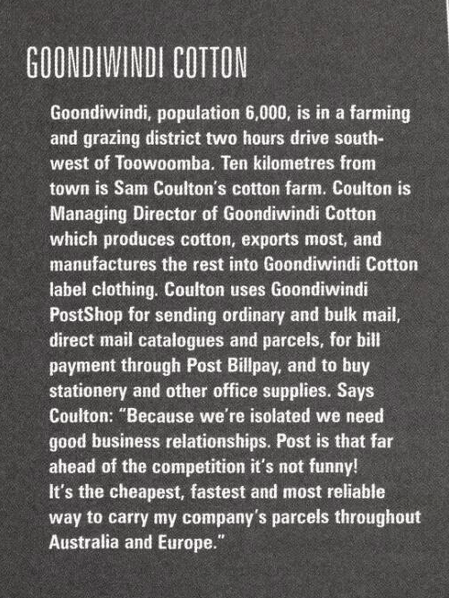
From Building Partnerships (Australia Post), 29 June 2002 page 23.
Hard Yakka
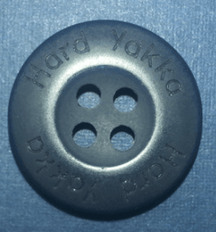
Hard Yakka is known for its work-wear, boots and accessories. It was started by David Kersall Laidlaw (1902-1979), his wife, and 5 others making work overalls in his parent’s Brunswick home in 1922. He took the name Yakka in 1936 and registered the firm as D.K. Laidlaw & Sons P/L in 1947. As the company grew it opened plants first in Weston Street, Brunswick and then larger premises in Lygon Street. During WW2 it had large contracts for the government, including the RAAF. New factories followed in Sunbury and in Ballarat Street, Brunswick. In 1960 it moved to Broadmeadows, with factories set up at Wangarrata, Wodonga, Albury and Darlinghust.
The name was changed to Yakka P/L in the 1990s. It was acquired by Pacific Brands in 2007 then by Wesfarmers as part of the Workwear Group in 2014.
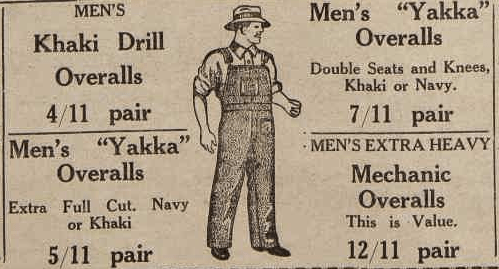
Goulburn Valley Stock and property journal, 8th November, 1939 page 1.
Hercules
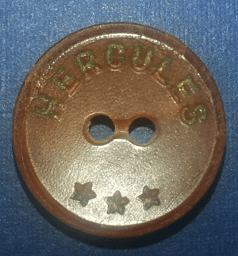
I think this button may be made of horn, as there is a ‘pick’ mark on the back where a tool was used to pry the button from the mould.
Barnet Glass (1849-1918) came to Melbourne around 1876 having learnt the trade of manufacturing waterproofing clothing in Manchester, England. His company, the ‘Pioneer Rubber Company’ manufactured ‘Hercules’ brand waterproof clothing from 1893 until 1905 when the company was bought out by Dunlop Rubber Company. (Barnett would start another company to import and manufacture car tyres, which was later also bought by Dunlop).
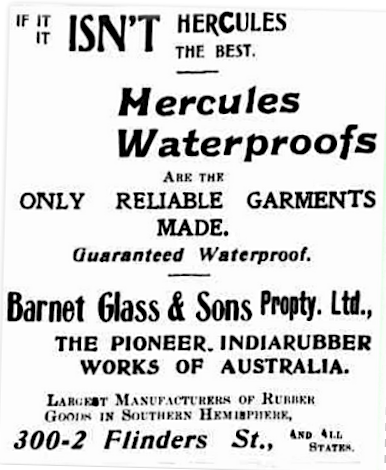
Punch, 21st May 190 page 30.
Neat n’ Trim
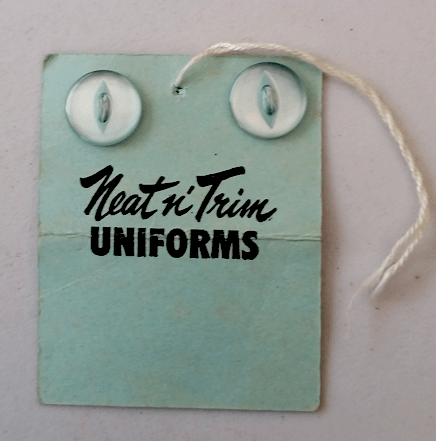
This uniform designer and supplier was established in 1962 to making health care uniforms. It now also covers industries such as beauty, hospitality and corporate work-wear.
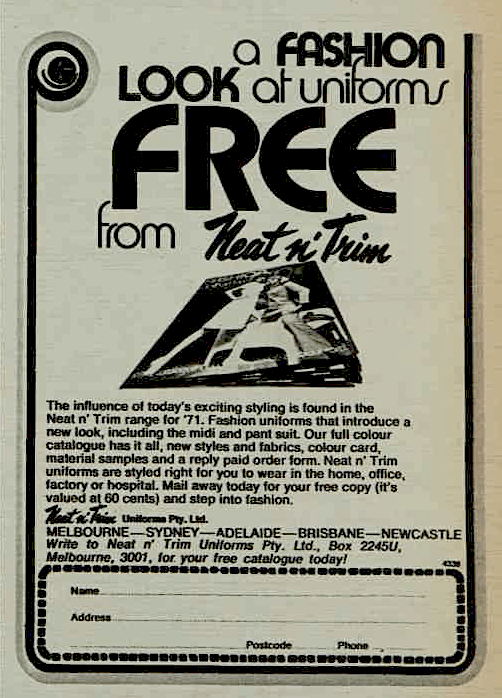
The Australian Women’s Weekly, 1st September 1971 page 91. Groovy pant suit and midi fashion uniforms!
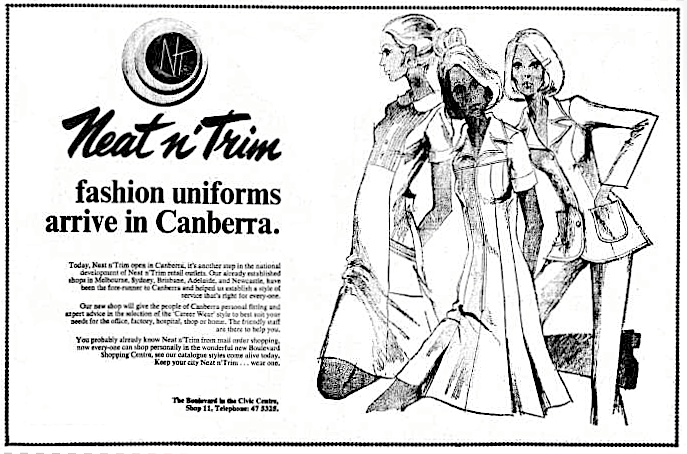
The Canberra Times, 1st November 1973 page 17.
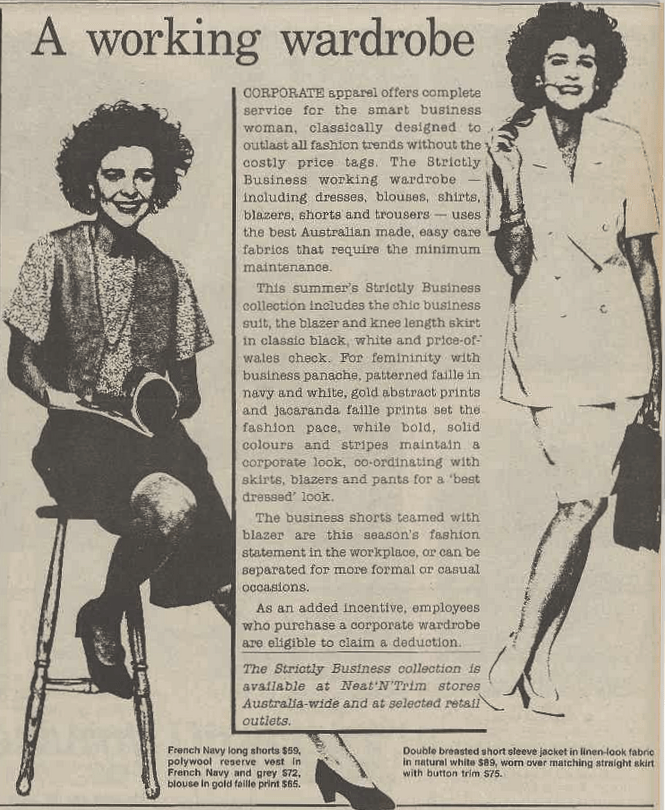
The Australian Jewish News (Melbourne), 14th September 1990 page 44.
Lincoln Mills, Coburg
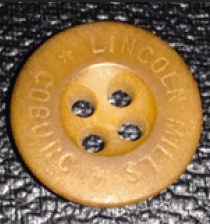
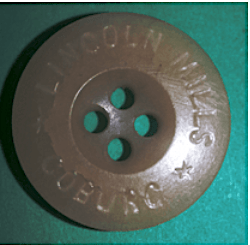
Since around 1801, when convicts started making woollen blankets in Parramatta, mills have been a part of Australia’s industrial landscape. Lincoln Mills were built in Coburg in 1909.
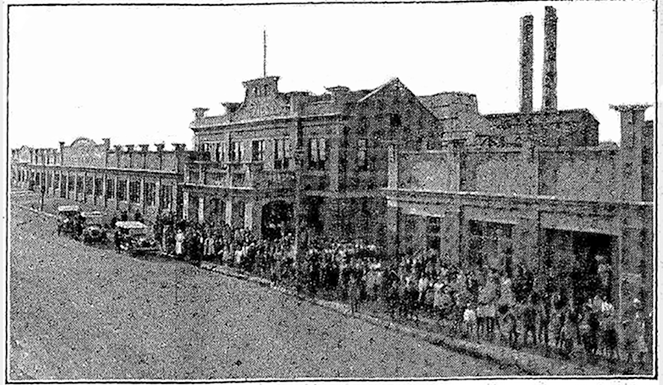
Shepparton Advertiser, 19th June 1922 page 4. The mills in 1922.
Paramatta Woollen Mills Ltd., Sydney
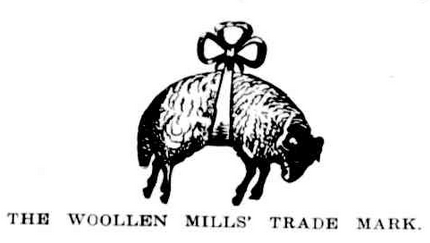
In August 1803 Governor King appointed a Scottish convict weaver to run a weaving establishment. This was the beginning of an organised woollen industry in Australia, although female convicts had been spinning and weaving before this, sheep having been brought out with the first fleet in 1788. From 1804 female prisoners at the ‘Female Factory’ were set to work weaving woollen cloth, sewing clothes and washing laundry.
In 1869 John French started producing tweed fabric at Darling Mills, originally a flour mill. His son Alfred produced tweed at the Cumberland Woollen Mill, also originally a flour mill, from 1870.
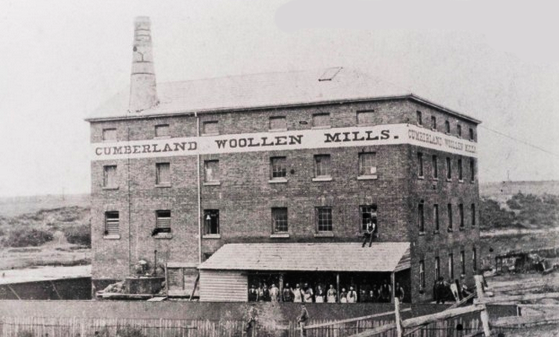
From the Parramatta Heritage Centre
In 1887 brothers William and J. H. Murray bought Darling Mill and renamed it the Paramatta Woollen Mill. They later bought the Cumberland Mill.
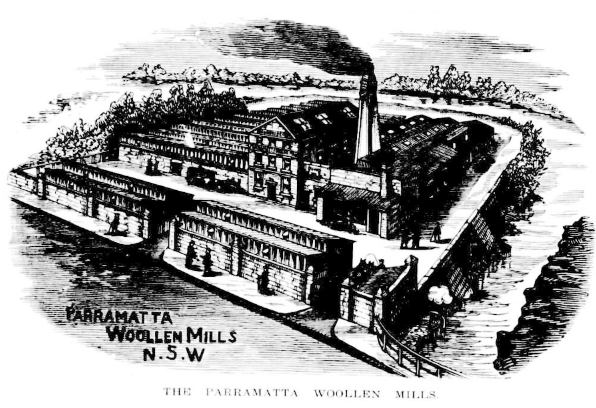
The Australian Town and Country (Sydney) 1st March 1902 page 35.
The business prospered. By 1900 they won a gold medal for uniforms they had made. They provided uniforms for troops serving in the Boer war, for water police and for hospital attendants. In 1911 they were taken over by the Sydney Woollen Mills which had been established in 1870. In 1975 the piece goods division was sold off, with the company in liquidation by 1984.
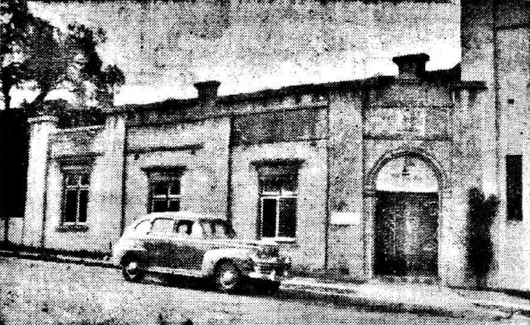
The World’s News (Sydney), 10th October 1953. Part of the Sydney Woollen Mills page 22.
https://sydneylivingmuseums.com.au/convict-sydney/convict-women-female-factory
Peter Jackson
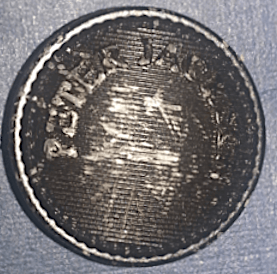
Starting in 1948 from their Little Bourke Street barbershop, siblings Olga, Herbert Peter and David Jackson started to sell neckties, extending into tailored menswear by 1953. In 1976 the company failed, with Peter moving to Queensland and painting houses. The siblings revived the business with David’s son Paul Jackson as the new managing director, and in 1993 Peter returned to the company. The company is still in family hands (Paul and sons David and Nicholas) with more than 60 stores Australia wide. The advertisement below is from The Argus, 14th January 1957.
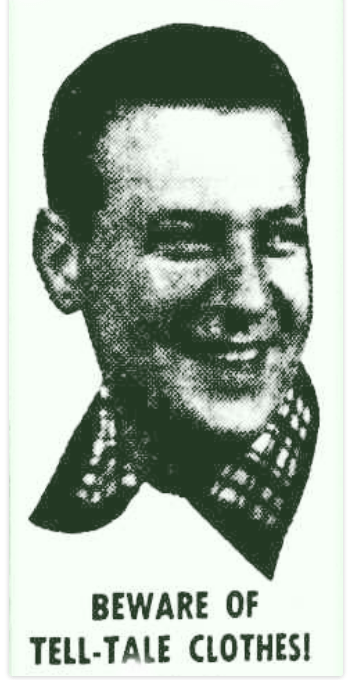
Purely Australian Clothing Company
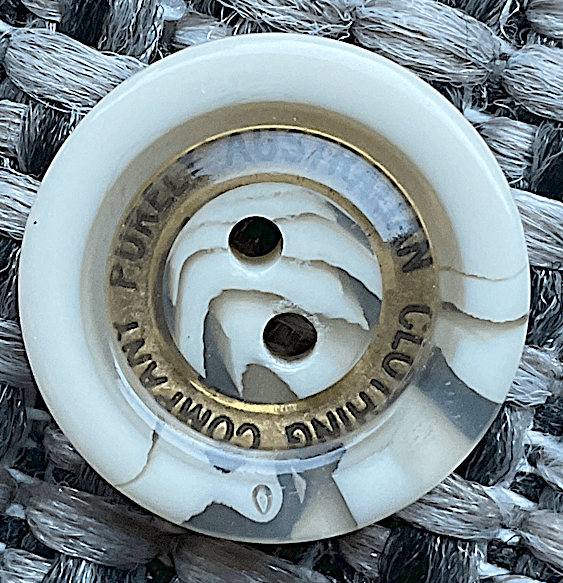
Victoria Company traded as Purely Australian and Purely Australian Clothing Company in the 1990s-2000s, but is no longer trading. They sold clothing including woollens, T-shirts and fleece jackets and plush toys.
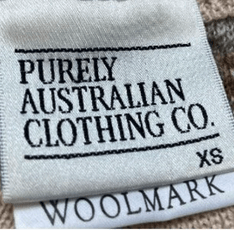
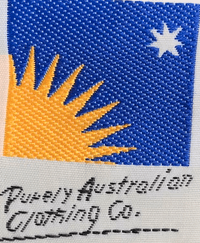
Q’land Woollen Coy.
The Queensland Woollen Company was proposed in 1874 with its mill built in Ipswich near the Bremer River in 1875. The location near the river for shipping, and also a nearby railway made the location a successful one. It was the first woollen mill built in Queensland, saving local producers the cost of shipping their wool to Sydney or Melbourne. Initially producing only unfinished cloth, it expanded into clothing. It would in time produce blankets and uniforms during both World Wars. (The large number of female employees meant that production did not suffer as it did for many work forces during the wars.)
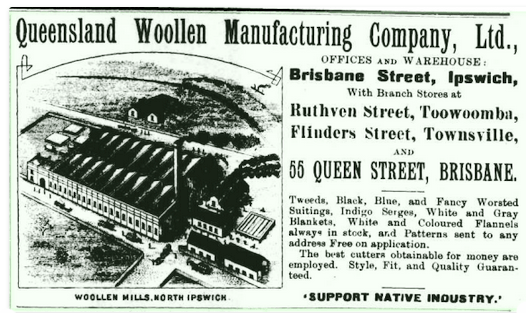
Illustrated Sydney News, 30th Aug 1890 page 17.
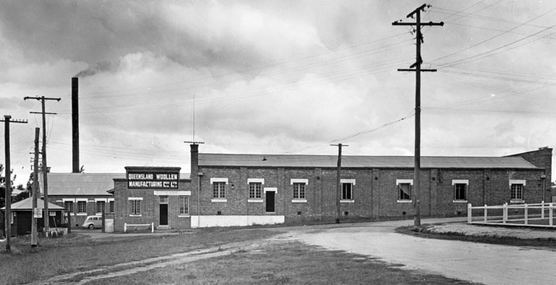
Queensland State Archives, Digital Image ID 23141
R. M. Williams
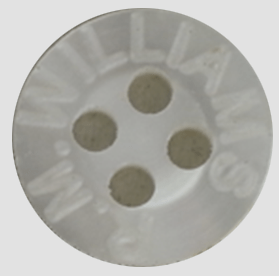
Reginald Murry Williams established a leather goods concern in 1932, moving to a small factory in his father’s back shed in Percy Street, Prospect in 1934.
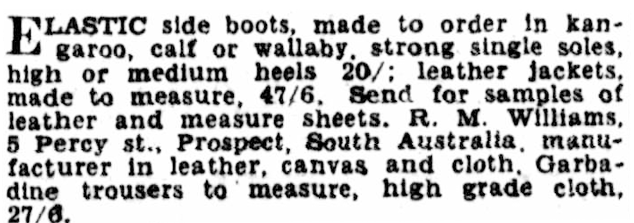
Chronicle (Adelaide), 2nd May 1935 page 3.
It was the leather riding boots that become particularly successful. He developed a successful mail order business.
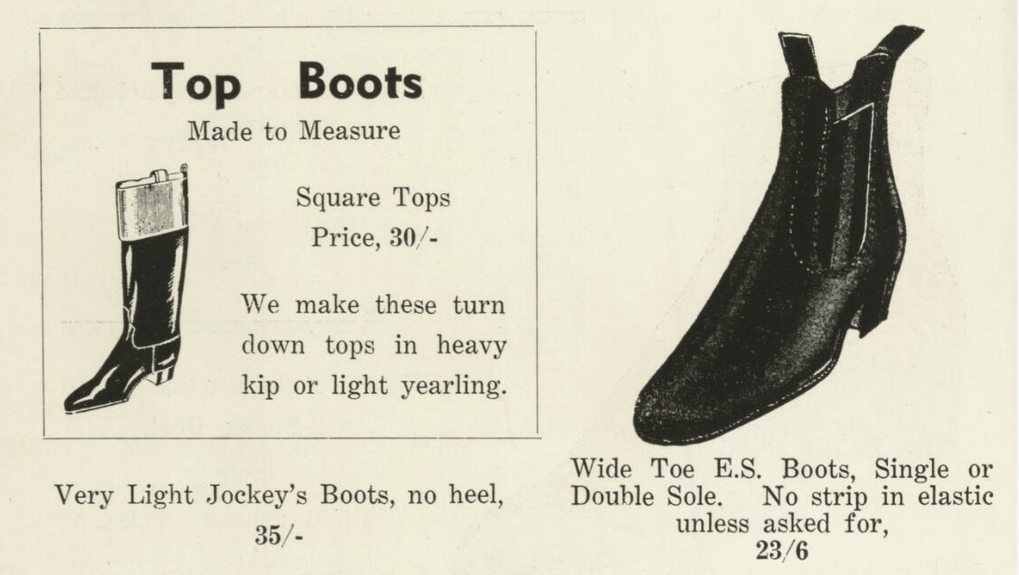
From the I January 1937 catalogue. https://nla.gov.au/nla.obj-2821983090/view?sectionId=nla.obj-2858988384&searchTerm=%22r.+m.+Williams%22&partId=nla.obj-2822035554
The company expanded into hats and clothing. In the 1970s the workshop moved to Salisbury, a suburb of Adelaide. Mr Williams sold the business in 1988. He passed away in 2003, aged 95 years. The company spent time in overseas ownership, but since 2020 returned to Australian ownership when Andrew and Nicola Forrest’s Tattarang investment group acquired it. It now has 74 stores both here and around the world.
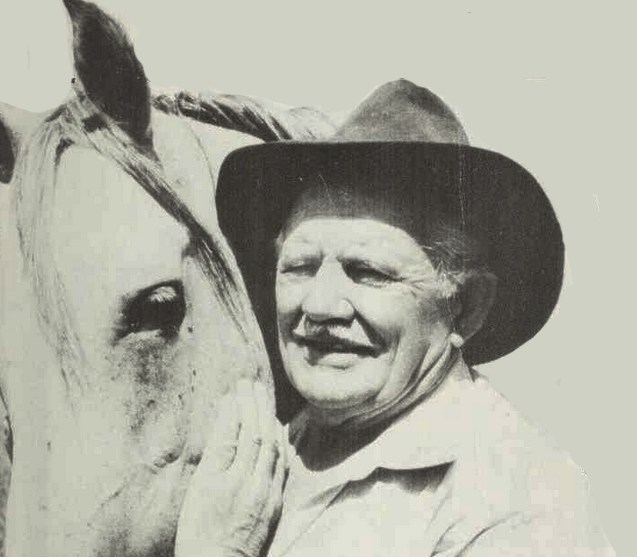
The Australian Women’s Weekly, 18th March 1981 page 33.
S.A.W. Co Adelaide (also S.A.Wn. Co. Adelaide)
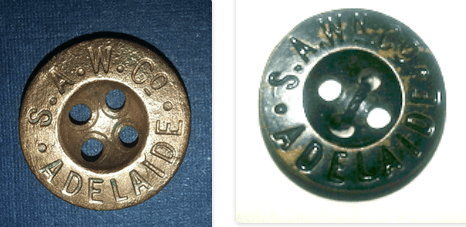
In 1883 the South Australia Woollen Company was formed with 30 employees on the site of a previous tweed factory in Lobethal. The company began supplying military, customs and railway uniforms from 1891. They produced supplies for troops for the Boer and both World Wars. Their brand of woollens, “Onkaparinga”, became so well known that the company was renamed Onkaparinga Woollen Company Limited in 1928. The mill ceased production in 1991.
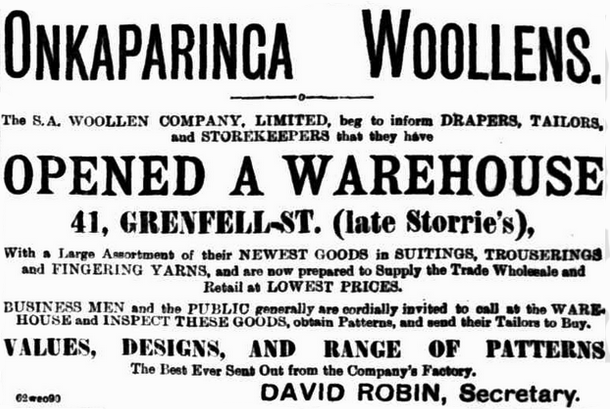
The Advertiser, 27th March 1894 page 3.
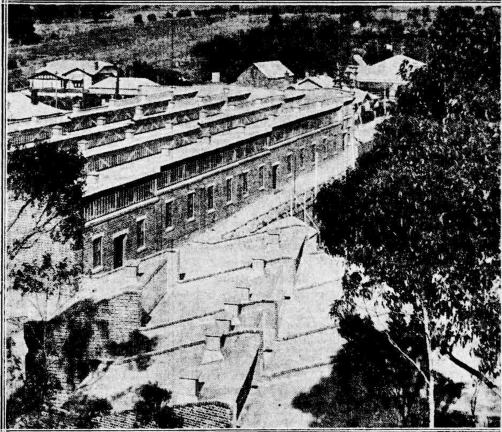
News, 15th February 19229 page 13.
See also http://www.austbuttonhistory.com/9th-september-2023/
Stubbies
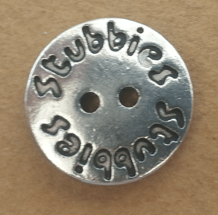
This is a brand of casual fashion shorts established in 1972 by Edward Fletcher & Co. They are so well known in Australia that they are virtually slang for shorts. The company is currently a subsidiary of Hard Yakka, owned by Wesfarmers.
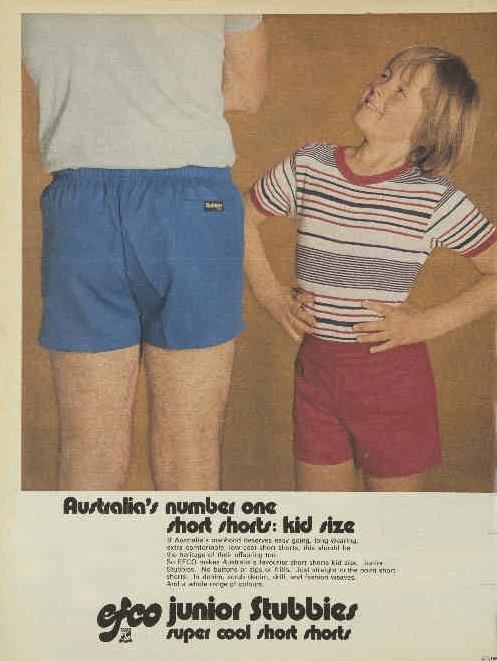
The Australian Women’s Weekly, 4th December 1974 page 116.
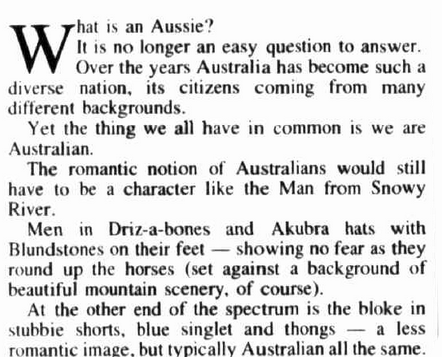
From a longer article in The Riverine Herald (Moama, NSW), 26th January 2001 page 2.
Toorallie Australia
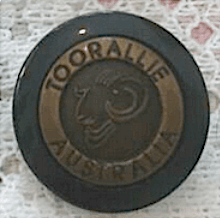
Toorallie is a merino wool clothing firm established in 1990.
Vogue Pattern Company
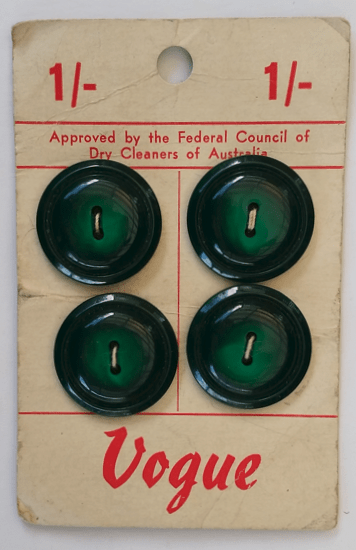
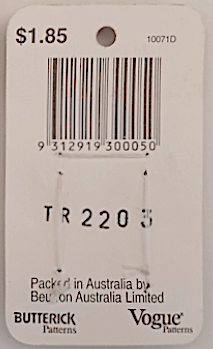
In 1899 the Vogue Patterns service was started by Vogue Magazines. This was bought out in 1914, renamed as the Vogue Pattern Company, with Vogue patterns sold by department stores from 1916. In 1961 Butterick licensed the name and trademark Vogue, and purchased their pattern making division. Beutron ran cross promotions with Butterick/Vogue over many years. Many Beutron cards have the name Vogue and Butterick on the back.

